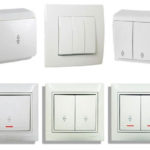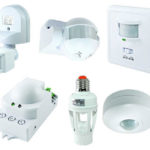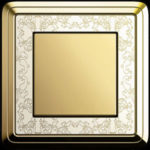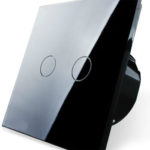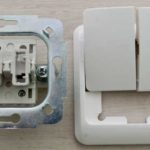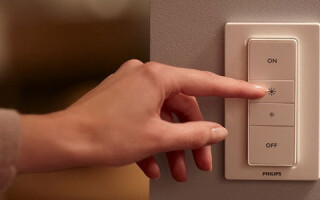There are a large number of ways to control lighting, as well as, in fact, types of lighting devices. This article will discuss devices for controlling light and options for their installation and connection.
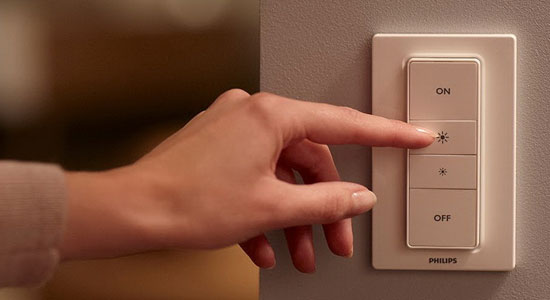
Content
General principles for mounting light switches
Installation of a simple lighting system and control devices is carried out during repair work in the room. With hidden wiring, before performing fine finishing work, the cable is laid in strobes and preparation of places for the installation of switches. At the same time, switching of switches, lighting devices and supply lines is carried out in mounting junction boxes.Such boxes can be located in special niches in the walls, hidden in the floor or behind a tension (suspended) ceiling.
In some cases, for example, in wooden houses, installation of concealed wiring is prohibited by regulations, therefore, in such premises, installation is carried out openly after finishing the premises (using cable channels or special corrugated tubes).
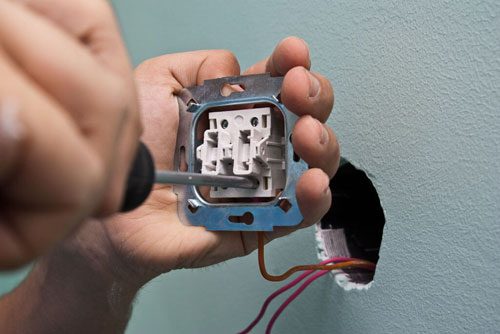
The general principle of connecting switches in most cases is the same: the switch serves to break the phase on the line, and zero is carried out directly to the lamp. Why phase and not zero? This requirement is expressly stated in the PUE, which states that the possibility of breaking one neutral conductor without disconnecting the phase should be excluded. This is directly related to safety measures in the operation of lighting devices. When the device is disconnected from the mains using the switch, it must not be energized so that it can be safely repaired or the lamp changed.
Location of switches, controlling lighting, is selected based on the habits of future users and the configuration of the room. In the general case, the installation of switches on height 90 cm from the floor. This is due to the fact that both a child and an adult can conveniently use such a switch.
When planning the installation of switches, it is best to draw up wiring diagrams in the junction box and a plan indicating the location of lighting points and control devices, as well as make markings directly on the walls. This will help avoid mistakes.
Wiring diagrams for switches and lamps of various types
The choice of connection scheme depends on the number of lighting fixtures and points to control their operation.Below we consider the most common of them.
One-button switch - a circuit for switching on one or more lamps at the same time
The most commonly used lighting connection option is single-gang switch. With it, you can turn on and off both one lighting device, and several at the same time. Such a switch is mounted in a standard socket box, in case of flush-mounted electrical wiring. Or it can be overhead, when laying the cable in an open way. Installation of electrical wiring and connection of lamps and switches occurs in the following sequence:
- A supply cable is being laid from the electrical panel to the junction box above the location of the future switch;
- A place is being prepared for installing the switch and from it along the wall, strictly vertically, a two-wire wire is connected to the junction box;
- From the junction box to the lighting fixtures (regardless of the number of lamps) an electric cable is supplied in a three-core (if it is necessary to ground the device) or in two-core version (without grounding);
- The switch is installed according to the diagram indicated on the device;
- In the junction box, connection of supply lines, lamps and switches according to the scheme for a single-gang switch.
The circuit for connecting such a switch for one device is as follows.
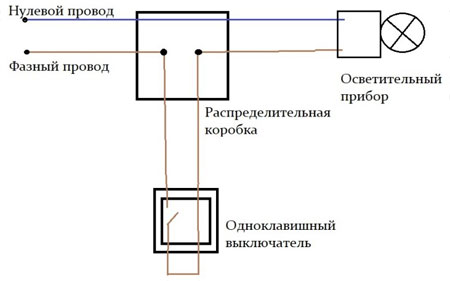
For several lighting fixtures that will turn on at the same time, the circuit will change slightly.
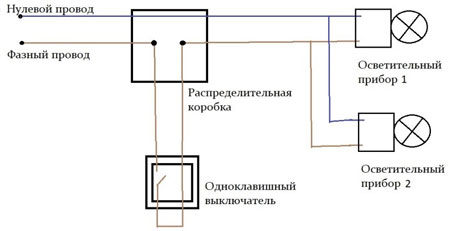
Two-gang and three-gang switch - separate switching on of chandelier lamps or two independent lamps
The connection of two-gang or three-gang switches is carried out similarly to the one-gang version. The difference lies in the number of cores that are connected to the switch and the wiring diagrams in the junction box.
A two-button switch can be used to control both two separate lamps, and the operation mode of one chandelier with several lamps. To do this, one supply phase wire is connected to the switch and two outgoing lines to the junction box. The phase and neutral conductors are brought to the junction box from the electrical panel, and from the lighting devices, zero and phase from each device.
Connecting a two-gang switch and two lamps (or one chandelier with two modes of operation) as follows.
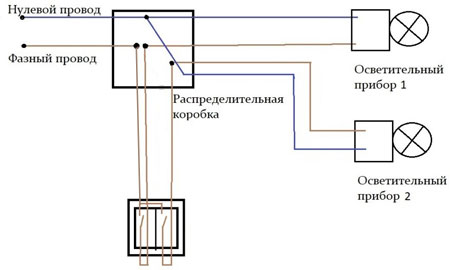
The installation of a circuit with three lamps and a three-gang switch is also carried out, only one more outgoing wire from the switch and one more lighting device are added.
Connecting a chandelier with a fan
Connecting a device such as a chandelier with a fan can be done in two ways: with the fan and lighting turned on at the same time, as well as with the possibility of separately turning on each mode.
The first option involves the installation of a system with a single-gang switch, in the same way as if two simultaneously turned on lamps were mounted.
The second option requires laying three wires to a two-gang switch (one key turns on the light, the second - the fan) and three wires to a chandelier with a fan, by analogy with the scheme for two independent lighting fixtures.
The choice of scheme depends on the desire of the user, as well as the type and number of cable cores laid to the switch and the suspension point of the chandelier with a fan.
Proximity switches
This type of control device is used to automatically turn on the lighting. Proximity switches include various control devices, the design of which includes sensors: light sensor, motion sensor or timer.
Light sensor Used to turn on the light when low light is detected. For example, this can include street lighting at dusk.
Motion Sensor allows you to turn on lighting devices when motion is detected, for example, when a person enters a room. They can have different versions: infrared, ultrasonic, radio wave or photoelectric. Such devices allow you to save electrical energy, are easy to install and convenient to use.
Timer It can be built into both a separate control device and the lighting fixture itself. It turns on or off the lamp at a user-defined time.
Connecting a walk-through switch
There is also a way to control lighting from several points in the room. For example, a person entering a room turns on the light, and being in another part of the same room, he can turn off the light. This option is possible subject to the installation of pass-through switches. Their principle of operation is based on the "switching" of the phase in the switches themselves. When installing this type of control devices, the circuit becomes more complicated and the cable consumption during installation increases, but this is justified in many situations. For more information about the design, installation schemes and the principle of operation, you can read in this article.
Similar articles:
